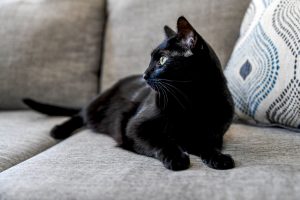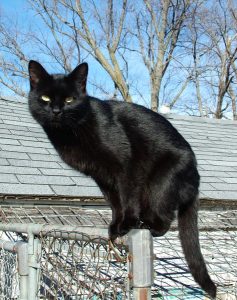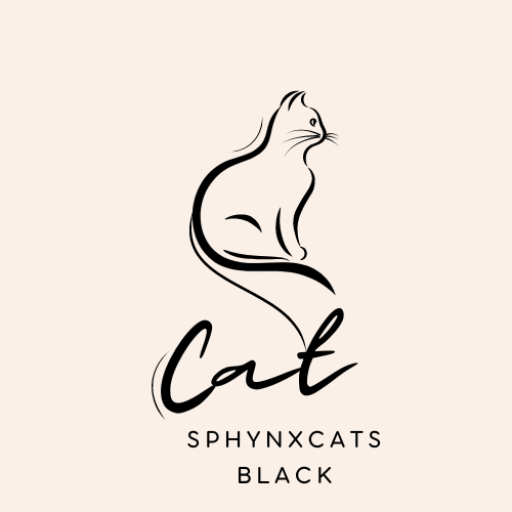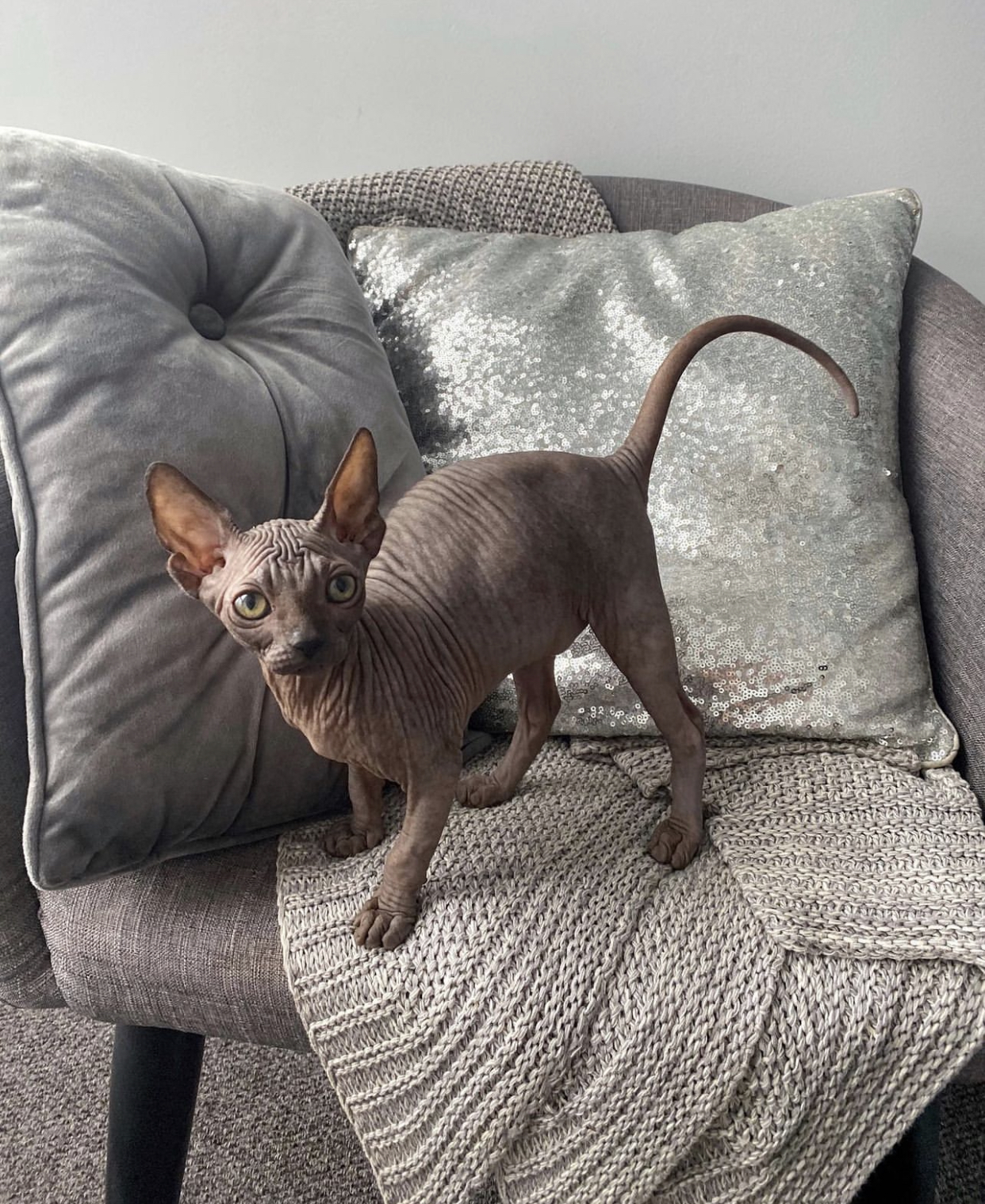Black cats are domestic cats with black fur, and they are known for their distinctive appearance and often carry a range of cultural and superstitious associations. Here are some key points about black cats:

black cats
1. Appearance: Black cats have solid black fur, which can vary in shade from a deep, glossy black to a more brownish or charcoal hue.
2. Breeds: Black cats can be found in various cat breeds, and their coat color can occur in both mixed-breed and purebred cats. Some breeds, like the Bombay and the Oriental Shorthair, are known for their black coats.
3. Superstitions and Beliefs: Throughout history, black cats have been both revered and feared in different cultures. In some cultures, they are considered symbols of good luck and protection, while in others, they have been associated with bad luck and superstitions, such as the belief that they bring misfortune or are connected to witches.
4. Adoption and Stereotypes: Unfortunately, black cats are sometimes subject to adoption challenges due to lingering superstitions. Some people still associate them with bad luck, which can lead to these cats being adopted less frequently compared to cats of other colors.
5. Personality: Coat color does not determine a cat’s personality. Black cats, like cats of any other color, have individual personalities that can range from playful and affectionate to independent and reserved.
6. Positive Associations: In some cultures and contexts, black cats have been revered. For example, in Celtic mythology, black cats were believed to bring good luck. In Japanese folklore, a black cat with a red collar is seen as a symbol of protection from evil spirits.
7. Pop Culture: Black cats have made their way into various forms of pop culture, including literature, movies, and television. They are often featured as witches’ familiars or as symbols of mystery and intrigue.
8. Black Cat Awareness: Some animal shelters and organizations have special events or promotions to raise awareness about black cat adoption and dispel superstitions surrounding them. These events often highlight the benefits of adopting black cats as loving and loyal companions.
It’s important to remember that superstitions about black cats are unfounded, and black cats make wonderful pets just like cats of any other color. When adopting a cat, consider their personality and compatibility with your lifestyle rather than focusing on their coat color. Black cats can be just as loving, playful, and loyal as cats of any other color, and they deserve loving homes and care.

black cats
cute cats black cats
Cats are known for their adorable and endearing qualities, and there are countless cute cat photos and videos online. Here are some characteristics and behaviors that people often find cute in cats:
- Big Eyes: Cats with large, expressive eyes can look particularly cute, especially when they’re wide open with curiosity or when they have that “puppy dog eyes” expression.
- Playfulness: Kittens and cats at play can melt hearts with their antics, pouncing, and playful behavior with toys or each other.
- Sleeping Positions: Cats are experts at finding the coziest and most adorable sleeping positions, from curled-up balls to stretched-out belly-up naps.
- Head Tilts: When a cat tilts its head to the side, it can look both inquisitive and incredibly charming.
- Kneading: Cats often knead with their paws, a behavior they learn as kittens when nursing. This kneading motion is not only comforting but also cute to watch.
- Purring: The soothing sound of a cat’s purring can be incredibly endearing, especially when they curl up in your lap and purr contentedly.
- Cuddling: Cats that enjoy cuddling with their owners or snuggling with other pets can create heartwarming and cute moments.
- Quirky Behaviors: Cats have many quirky behaviors, such as sticking their tongues out, scratching in funny ways, or reacting to laser pointers, which can be utterly charming.
- Expressions: Cats can have a wide range of expressions, from curiosity to surprise to contentment. Capturing these expressions in photos can make them look even cuter.
- Unique Markings: Cats with unique coat patterns, like calico, tabby, or Siamese, often have striking and captivating appearances.
- Tail Twitching: When a cat’s tail twitches playfully or puffs up when they’re startled, it can be both amusing and adorable.
- Tiny Paws: Kittens, in particular, have incredibly tiny and delicate paws that many people find irresistibly cute.
- Ears and Whiskers: Cats’ ears and whiskers often twitch and move, adding to their expressiveness and charm.
- Chirping and Chattering: Some cats make chirping or chattering sounds when they’re observing birds or other prey animals, which can be cute and amusing to witness.
Remember that while cats can be incredibly cute, they also require care, attention, and love. If you’re considering bringing a cat into your life, make sure you’re prepared to provide for their needs and give them a loving and safe home.
hypoallergenic cats
Hypoallergenic cats are breeds or individuals that produce fewer allergens compared to other cats, making them a potential option for people with cat allergies. While no cat breed is entirely hypoallergenic, some are less likely to trigger allergies due to specific characteristics. Here are a few hypoallergenic cat breeds and factors to consider:
- Siberian: Siberian cats are known for producing fewer allergenic proteins, specifically a lower amount of the protein Fel d 1, which is a common allergen in cat saliva and skin glands. People with mild cat allergies sometimes find Siberians more tolerable.
- Balinese: Balinese cats are often considered hypoallergenic because they produce less of the Fel d 1 protein and have a single, longer coat, which can trap allergens and reduce their dispersion.
- Russian Blue: Russian Blue cats have a shorter coat and are believed to produce fewer allergenic proteins, making them a better option for some allergy sufferers.
- Cornish Rex: The Cornish Rex has a unique curly coat that can trap fewer allergens than the fur of other cats, potentially reducing allergen exposure.
- Sphynx: Sphynx cats are hairless or have very fine downy fur, which means they may not shed as much hair, reducing allergen spread. However, they do require regular bathing to remove the oils that can accumulate on their skin.
It’s important to note that individual reactions to cats and their allergens can vary widely. What may work for one person with allergies may not work for another. Additionally, the level of allergens in a cat’s environment can depend on various factors, including grooming habits, diet, and overall health.
If you’re considering getting a cat and have allergies, here are some general tips to help minimize allergic reactions:
- Choose a Hypoallergenic Breed: If you decide to get a cat, consider one of the breeds mentioned above that are known for producing fewer allergens.
- Regular Grooming: Regularly groom and bathe your cat to reduce the amount of allergens on their fur and skin. This is especially important for breeds with longer coats.
- Air Purifiers: Use HEPA air purifiers in your home to help filter out allergens from the air.
- Frequent Cleaning: Regularly clean your home, including vacuuming with a HEPA-filter vacuum, washing bedding, and dusting to reduce allergen buildup.
- Medication: Consult with an allergist who may recommend allergy medications or immunotherapy (allergy shots) to help manage your cat allergies.
- Create Allergy-Free Zones: Designate certain areas of your home as cat-free zones to provide you with a space where you can breathe easier.
Before bringing any cat into your home, spend time with the specific cat you plan to adopt to see if you have an allergic reaction. This will help you gauge your tolerance to that particular cat’s allergens.

